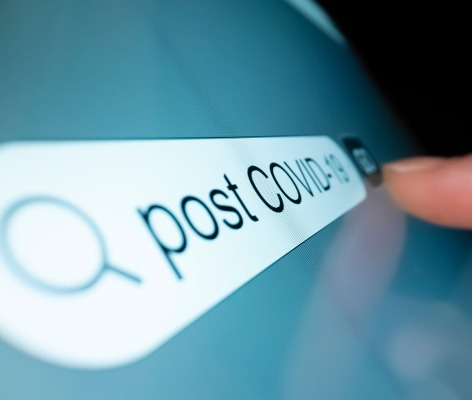When it comes to enhancing Accounts Payable (AP) efficiency, it's essential to set your sights on more significant goals that extend beyond the timely processing of invoices and avoiding late payments. After all, the AP landscape is constantly evolving, demanding continuous adaptation and innovative thinking. With this in mind, here are five ways for how to improve the Accounts Payable process:
-
Embrace a fully paperless AP process, spanning from Procurement to Payment (P2P).
-
Drive supplier participation and enablement.
-
Gain same-day invoice approval.
-
Maximize early payment discounts by capturing all available opportunities.
-
Provide your team with mobile access for digital invoice approval and seamless communication abilities.
Imagine being able to accomplish all five objectives while saving time, reducing costs, and significantly boosting efficiency. And, if you could, why wouldn't you do it?
This quick goal-setting exercise goes beyond the traditional debates of paper versus electronic or manual versus automated processes. At its core lies the ability to transform the AP function into a strategic asset, one that drives further digital transformation throughout the entire organisation.
What are the top 5 Accounts Payable challenges faced by finance leaders
Ardent Partners published a "State of ePayables" report, which surveyed over 200 finance leaders to understand their objectives in terms of digital transformation, collaboration, and analytics. It offers insights into the primary challenges identified by finance leaders in their pursuit of the ultimate goal of becoming a streamlined, strategic, and data-driven asset:
-
57% say invoice and payment approvals take too long
-
48% lament the high percentage of exceptions
-
28% suffer from too much paper
-
22% are concerned about manual B2B payments
-
20% are concerned with late supplier payments
The best way to overcome these challenges? Setting goals for the AP process.
Why should you set goals in the Accounts Payable process?
Accounts Payable departments and teams possess a wealth of valuable data related to liabilities, B2B payment metrics, and supplier performance, making them a valuable hub of intelligence for other departments. By analysing and combining data points from purchase orders and invoices, AP can contribute to better cash management, cost reduction, and informed decision-making at the highest levels of any organisation.
However, in a year filled with unprecedented challenges including inflation and supply chain instability, it is important to assess the goals of AP leaders and how they will adjust throughout any crisis. What will they do when things get upended or put on hold?

The impact of COVID-19
According to the report, 94% of all AP departments were impacted by COVID-19, with 9% of leaders defining the impact as "massive" and another 22% defining it as "high". This is based in one of the areas that felt the greatest impact after sales, revenue, and cash (35%) - internal operations (25%) - where the work-from-home mandates completely changed how teams communicated and collaborated. And, while the AP team was just one of many departments facing these new challenges, the need to deal with paper invoices and ensure that suppliers were paid made the AP processes an essential function for business continuity. Simply put, whatever the existing AP process was, it needed to work.
The report is clear, stating "for a majority of leaders overseeing AP, the pandemic made it patently obvious that manual processes are no longer acceptable and must be stricken from the workplace."
36% of finance leaders want to enable more suppliers to submit their invoices electronically
AP automation plays a significant role in streamlining workflows, but the benefits extend far beyond task automation. By integrating Accounts Payable automation with ePayables, the entire procurement-to-pay process is expedited, resulting in reduced business costs, improved cash management, and opportunities for a well-structured supplier payment strategy.
Leveraging AP solutions for ePayments empower businesses to customize payment decisions such as timeframes, early pay discounts, and vendor rebates. Consequently, an increasing number of AP departments are encouraging suppliers to transition to exclusive acceptance of electronic payments.
Nearly 65% of businesses state they will have automated the complete P2P cycle by 2023
With the rise of remote work environments, AP automation has become a necessity rather than an option. However, this statistics demonstrates the importance of viewing procure-to-pay as a single process, one that can optimize efficiencies and data intelligence. Is the investment worthwhile?
The answer is yes: the Ardent research found that top-performing AP organisations are 157% more likely than all others to automate all facets of P2P. Therefore, when implementing comprehensive Accounts Payable automation, your company goals should incorporate:
-
payment-related processes,
-
invoice approval,
-
invoice receipt, and
-
invoice processing.
By focusing on these key areas, businesses can reduce errors and enhance the finance and accounting department's performance.
51% of enterprises already have (digital) B2B payments in place
Implementing automated digital B2B payments is a strategic investment that bring numerous benefits to the Accounts Payable function and the overall financial health of an organisation. These include:
-
Time and cost savings
-
Increased efficiency and accuracy
-
Fully streamlined workflow
-
Enhanced cash flow management
-
Improved supplier relationships
-
Tightened security and compliance
-
Real-time, detailed data insights and reporting capabilities
-
Scalability and flexibility to accommodate changing business needs.
Set goals using SMART goals
Smart goals are an effective framework for setting and achieving targets. The acronym "SMART" stands for Specific, Measurable, Achievable, Relevant, and Time-bound. By utilizing this approach, individuals and organisations can define clear objectives that are set within a defined time frame and provide a way to measure progress.
Smart goals provide a roadmap for success, encouraging accountability, motivation, and strategic planning in or to maximize team member’s productivity and accomplishment. The integration of automation with smart goals reduces manual effort, minimizes errors, and frees up valuable time and resources to focus on other areas for growth. Ultimately, the combination of the two empowers individuals and organisations to work smarter together, achieve better results, and drive ongoing improvement.

Aim higher with automation to achieve your AP goals
Aiming higher with automation and setting clear, well-defined goals is not only wise but a necessity in today's fast-paced business environment. By embracing automation technology, organisations can propel their Accounts Payable department to new heights and achieve ongoing financial success more effectively than ever before.
Businesses can streamline their AP processes, eliminating manual tasks such as data entry, invoice processing, and payment approvals that can be time-consuming and prone to error. By automating such repetitive and boring tasks, employees can then dedicate their time and skills to more strategic activities such as analysing financial data, identifying cost-saving opportunities, and building stronger vendor relationships.
Furthermore, automation enhances efficiency in the AP process, allowing for tasks to be completed faster and with greater accuracy while eliminating bottlenecks and ensuring a smoother workflow. This not only saves time but also improves data accuracy, reducing the risk of errors that can lead to financial losses or strained supplier relationships.
Implementing Accounts Payable automation can also drive supplier participation and enablement, with AP teams able to answer status questions in real-time and paying invoices consistently in a timely manner.
Ultimately, embracing automation and setting ambitious AP goals - especially while using SMART goals - not only creates an efficient accounting department, but also position any organization for long-term success. As technology continues to advance, organisations can then aim higher, constantly seeking additional opportunities to leverage automation and stay ahead of the competition.
What now?
Don’t get distracted by the small stuff when the next payment cycle rolls around and invoices trickle in. Instead, aim higher and define your long-term goals according to existing business objectives. Start a conversation in your company. Engage with as many colleagues and partners as possible to imagine what the AP department can do to get the entire organization ready for the digital age. Leading this discussion will let Accounts Payable move from its old back-office role to the center stage of an exciting transformation.
Are you ready?
If you have your goals set or are ready to take the next big step, why not contact one of our AP Automation experts for a free demo.







